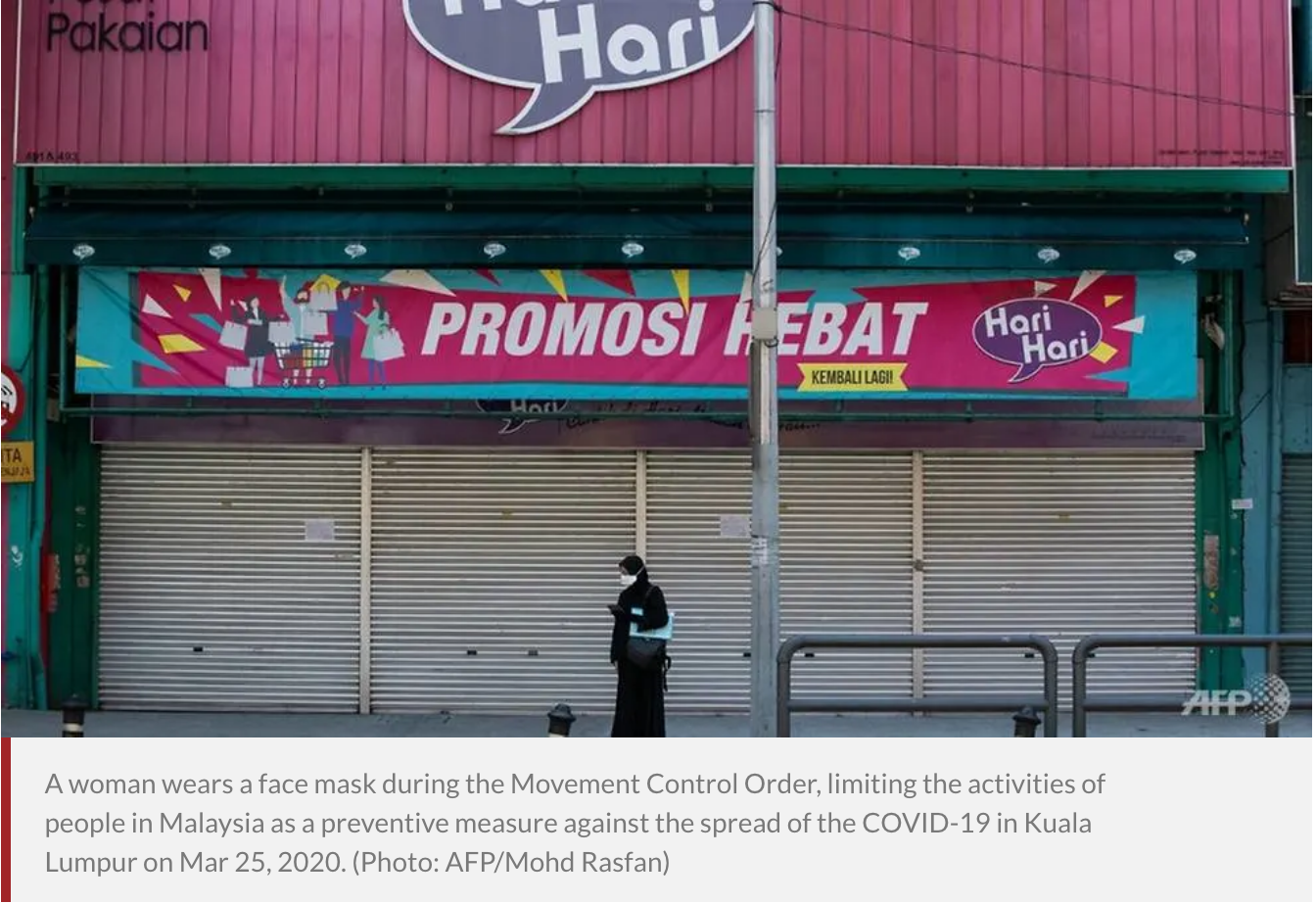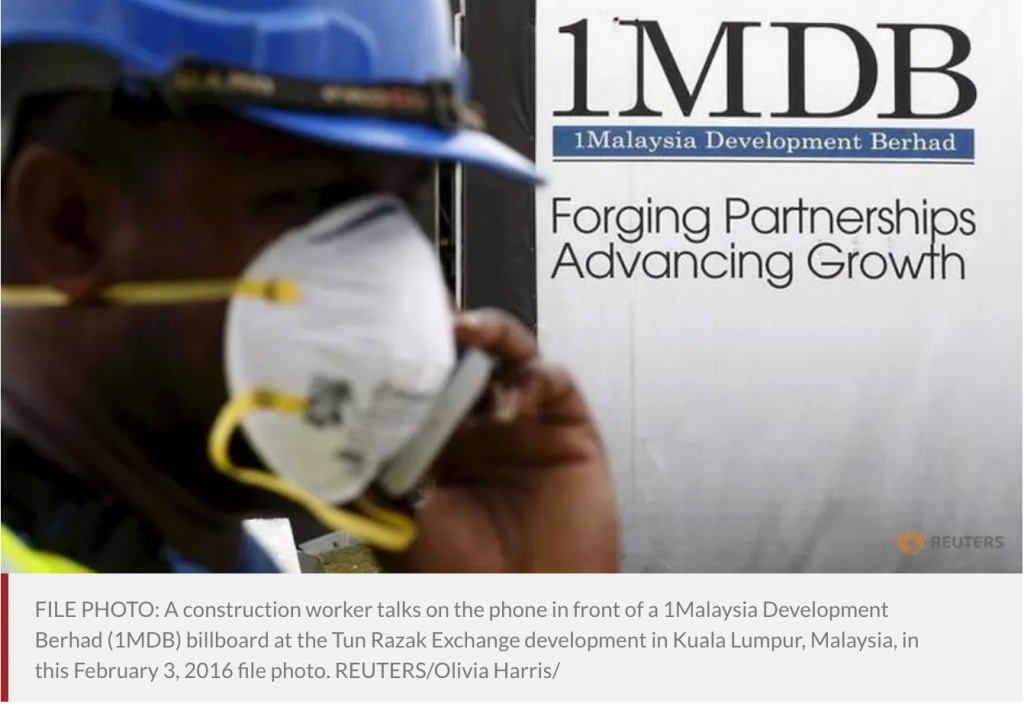Thursday, 2 April 2020
The new economic stimulus measures will bolster household incomes and boost companies’ cash flow but the challenge is most of the package would have been disbursed by May, says Cassey Lee.

SINGAPORE: Malaysians have lived in extreme uncertainty and fear since the country came under a type of lockdown beginning Mar 18, when the Movement Control Order came into effect.
These restrictions were slapped to slow the spread of the COVID-19 outbreak. As at Mar 31, Malaysia has seen 2,766 infections and 43 deaths. With the number of infected persons continuing to rise, there is no sign of when the epidemic will abate.
Adding to this misery is the economic fallout.The mounting economic cost from the pandemic is to some degree exacerbated by the MCO.There is no official estimate of the economic cost of these restrictions but an additional two weeks of lockdown would reduce Malaysia’s real gross domestic product (GDP) by 2.9 per cent for 2020 compared to 2019, according to the Malaysian Institute of Economic Research.
Two stimulus economic packages have been unveiled. The RM20 billion (US$4.6 billion) Economic Stimulus Package 2020 was launched on Feb 27 by then interim Prime Minister Mahathir Mohamad.
The second stimulus package, valued at RM230 billion, which carries the theme “Prihatin Rakyat” (caring for people), was unleashed by the new Malaysian Prime Minister Muhyiddin Yassin a month later on Mar 27. The sheer size of the new stimulus package reflects how rapidly the economic environment has deteriorated within a month.
The combined value of both stimulus package at RM250 billion is substantial at 15.5 per cent of the country’s GDP and equivalent to 84.2 per cent of the federal government’s original 2020 budget.
SUPPORT FOR HOUSEHOLDS
As befitting its theme, the second stimulus contains significant income support for Malaysians.About RM128 billion, or 55.7 per cent, is aimed at improving the welfare of Malaysians.
These assume the form of one-off cash payments to households and individuals – including retirees, civil servants, and college students – discounts on utility bills and deferments of rental payment for public housing and employees’ contributions to the Employees Provident Fund (EPF).

The bulk of the cash payments – some RM7.5 billion – will be disbursed in April, and RM4.8 billion in May.
Discounts for utilities, for electricity, water and Internet, the deferment of rental payment for public housing and the deferment of employees’ contributions to EPF are expected to increase the disposable incomes of households.
Overall, the financial support under the new stimulus programme is fairly substantial and will help alleviate income loss for Malaysians arising from the MCO, especially for the middle 40 per cent and bottom 40 per cent of households in Malaysia. The total income support in April is equivalent to about 21 per cent of the total monthly income of all households.
Consumption spending will, unfortunately, continue to be curtailed by the lockdown – thus reducing its multiplier effect – as people are only allowed out to buy their essentials.
PROVIDING BUSINESSES A LIFELINE
For businesses, the first economic stimulus package focused on boosting key industries suffering the brunt of the pandemic, including travel, hotels, airlines, retail, and theme parks, but many such incentives, such as those to promote tourism, are no longer relevant in the face of a world in lockdown in a worsening pandemic.
So the RM100 billion allocated in the new economic stimulus package to support business and expands to cover other sectors is well welcomed.
Existing funds to assist small and medium-sized enterprises (SMEs) in maintaining working capital will be increased by RM4.5 billion.
Businesses will also appreciate the cash flow relief from the exemption from contributions to the mandatory Human Resources Development Fund (HDRF) for six months, which will free up RM440 million, the deferment of employers’ contributions to the EPF, estimatedat RM10 billion, and subsidies for wages for three months, which will cost the government RM5.9 billion. These wage subsidies for companies will go a long way to stem the retrenchment of workers.

The new stimulus package also increases financial assistance to SMEs via an increase in the allocation for two funds – the Special Relief Facility (SRF) and the All Economic Sectors (AES) funds – by RM4 billion.The size of both funds of RM11.8 billion, which will be managed by Bank Negara Malaysia (BMN), is substantial.
However, their impact may be limited when only 30 per cent of SMEs currently obtain financing from banks and government agencies because they do not meet lending requirements.
The government should, hence, seriously consider giving out financial grants (rather than loans) to SMEs through less conventional channels including local governments and trade associations, when only 37.8 per cent of SMEs have said they only have enough cashflow to get through April, according to trade association SME Malaysia.
Larger firms will welcome the RM50 billion Guarantee Scheme in the second stimulus package, administered by financial guarantee insurer Danajamin Nasional Berhad, which provides loan guarantees for working capital financing.
The separate announcement on Mar 25 by Bank Negara of a six-month debt moratorium will additionally help local companies weather adverse economic conditions.
WHAT NEXT?
Despite these sizeable stimulus packages, it will be hard for Malaysia to escape an economic recession in the coming months. The World Bank has lowered its forecast for the country’s economic growth for 2020 from 4.5 per cent to -0.1 per cent.

The severity of this recession will depend on how fast the COVID-19 epidemic can be controlled domestically and globally.
Although the two stimulus packages will buttress household incomes for two months, additional income support will be required if the government fails to contain the COVID-19 epidemic by end-May, and has to extend or even expand restrictions.
The new stimulus package involves a direct fiscal injection of RM25 billion, equivalent to 8 per cent of the original 2020 budget, increasing the federal government’s debt-to-GDP ratio closer to the 55 per cent self-imposed limit.
The Malaysian government’s fiscal space for more stimulus – already constrained by the decline in petroleum revenues and deferment of tax collections – is very limited unless the 55 per cent limit is breached or more off-balance sheet financing is used.
In the medium to long-term, Malaysia’s slowdown in economic growth will also make it challenging to undertake fiscal consolidation.
Find the right insurance for your business
Already know what you need?
Stay Updated!
Get instant access to the latest news, updates and more.
ADVERTISEMENT








